Quantum sensors exploit the fundamental properties of atoms and light to make measurements of the world. The quantum states of particles are extremely sensitive to the environment, which is a virtue for sensing, if problematic for making a quantum computer. Quantum sensors that use particles as probes can quantify acceleration, magnetic fields, rotation, gravity and the passage of time more precisely than can classical devices that are engineered or based on chemical or electrical signals. They can be used to make atomic clocks that are smaller and more accurate, cameras that can see through fog and around corners, and devices for mapping structures underground, among many other potential applications. They stand to transform a multitude of sectors, from energy, land use and transport to health care, finance and security. But their commercial promise needs to be appreciated more.
As researchers developing quantum sensors in the laboratory, we are keen to make governments and industry more aware of the possible benefits — in particular, in improving the safety of national critical infrastructure that relies on sensors, such as air-traffic control systems and water utilities. However, we and others face hurdles in gaining attention and funding to adapt quantum sensors for use in real-world settings.
One challenge is that it is hard to predict exactly how and where emerging technologies will be adopted. The history of physics is full of serendipitous inventions. X-ray generators, for example, were the accidental by-product of experiments to see whether beams of electrons could pass through glass, yet they are now crucial to medicine and airport security. The inventor of the laser, Theodore Maiman, famously described that technology as a “solution seeking a problem”.
Another factor is that many people — including business leaders — think quantum technologies are devices of the future, not the present. Unlike quantum computers, which get a lot of press but might be decades away from offering wide commercial advantage, quantum sensors are already in use in the lab. A handful are in commercial use: atomic clocks, for example, measure the passage of time supremely accurately using high-frequency quantum transitions in atoms. Their accuracy maintains the synchronization of communication and energy networks, and digital radio stations. They are crucial for satellite navigation services such as GPS.
Light waves squeezed through ‘slits in time’
Even so, it took 20 years to move GPS receivers from being specialist devices used by the military, tech-savvy hikers and ships’ captains to providing navigation for smartphones and cars. Now, the quantum community needs to establish similar pathways for realizing the commercial benefit of other types of quantum sensor.
Quantum gravity sensors and quantum gas detectors flown on satellites could collect accurate data on levels of groundwater, carbon dioxide and methane to improve climate modelling. Quantum magnetic sensors can image people’s brain signals in real time1, and quantum gravimeters can monitor underground water levels and volcanic eruptions2. Combinations of quantum sensors that track gravity gradients, magnetic fields and inertial forces 1,000 times more precisely than can classical ones might, for instance, enable reliable navigation in places where satellite signals are jammed or cannot reach, such as remote sites, conflict zones or underwater.
Here we highlight five priorities for commercializing quantum sensors to get them adopted faster.
Make them more robust
Innovators in industry are rarely excited by a lab result that simply proves a concept. They want to know that a device will work reliably for a specific application, and that it will benefit their business’s finances. Researchers need to ensure that any sensor bound for the market is robust and reliable, can be manufactured reproducibly and cost-effectively, and is compatible with other systems in use. In practice, this might mean redesigning many aspects of the technology. Each tweak brings fresh challenges.
For example, in our lab at the UK Quantum Technology Hub Sensors and Timing in Birmingham, we have developed a sensor that measures gradients in gravity. In two chambers 1 metre apart, lasers trap rubidium atoms from a vapour and cool them to a standstill3. More laser pulses create superpositions of quantum states and read these out for the rubidium atoms in each cloud. Software converts those signals into a gravity gradient measure. By using a single laser beam to manipulate the atoms, this quantum device is 1,000 times less sensitive to noise from vibrations than are conventional gravimeters, and is thus easier to deploy.
A diamond-based quantum sensor can measure magnetic fields at the atomic scale.Credit: David Kelly Crow/de Leon lab/Princeton University
The version we first demonstrated in the lab was the size of a small van, with tables full of optical components and racks of electronic systems and power supplies. It was built from bespoke parts and tuned by hand. Taking this device outside the lab, to sense subterranean tunnels through small changes in local gravity4, meant making all of the components more robust, smaller and cheaper, as well as improving their performance.
Our physicists and engineers had to find ways to control the laser beam under varying temperatures, contain it in a vacuum to avoid air turbulence and pulse the laser to reduce the impacts of stray magnetic fields. Work is ongoing to operate the device on a moving platform to ease deployment, to increase its sensitivity and bandwidth to speed up mapping, and to reduce its size to that of a backpack so it can be mounted on a drone to survey large areas.
Test quantum mechanics in space — invest US$1 billion
One promising avenue for miniaturization is integrating quantum sensors in photonic microchips5,6. These rely on light (photons) rather than the electrons used in conventional microchips, and are fast and energy efficient. Similar technology is found in fibre-optic networks. Quantum sensors could be miniaturized using photonic chips and existing manufacturing processes for micro-electro-mechanical systems (MEMS), which are used in vehicle airbags. The benefit is that they are robust and cope with vibrations better than bulkier optical systems do.
The challenge is integrating all the elements into one system that includes lasers, modulators, waveguides and beam splitters, as well as components such as vapour cells. Further research and investment are needed into new materials, fabrication technologies, device packaging and procedures for testing and validation. Standardization of quantum sensor technologies as low-cost building blocks is also urgently required, mirroring the processes for fibre-optic communication and MEMS sensor technologies.
Work out where we need them
Researchers need to talk to business leaders to determine how quantum sensors can add value across a range of applications. For example, uses for a gravity sensor are not obvious; few people visualize their surroundings in terms of gravity or the density of materials. But after discussions with more than 100 companies, we concluded that gravity sensors would be excellent for illuminating unknowns in the ground, from the position of forgotten mineshafts to groundwater levels and the distribution of carbon in soils and magma flows. These can, in principle, be seen by classical gravimeters, but ground vibrations make the measurement time infeasibly long, typically 5–10 minutes for a single data point. With quantum gravity gradiometers, such data could be collected in seconds, opening up the potential for gravity cartography4. And that’s just what we have focused on so far.
An optical clock in which strontium ions oscillate in response to laser light.Credit: Andrew Brookes, National Physical Laboratory/Science Photo Library
Money for applied research and multidisciplinary collaborations between academia and industry is needed to validate these ideas. In our case, the next step involves geophysics research using such gravimeters to improve understanding of how water flows and accumulates underground. This information could be used to refine flood models, for example. Civil-engineering research is also required on how best to detect leakage in water pipes using such sensors. Broader technological and economic considerations will determine how this approach can be used most effectively in water management.
Companies should start thinking about new business models, such as offering underground mapping services to farmers to help reduce water use in irrigation. Engaging in pilot projects would put businesses in a good position to capitalize on market disruption, rather than being caught out by it.
Integrate them in current systems
Any sensor must be plugged into a bigger system to reap its benefits. For example, an inertial sensor — one that detects movement — is relatively useless on its own. But when integrated with electronics, software and a display in a smartphone, it can provide health information on step counts and calories burnt by the user.
Similarly, quantum accelerometers and sensors of rotation, gravity and magnetic field can be combined into position, navigation and timing systems for subsea and underground use. For this application, quantum sensors offer reduced bias, better precision and more stability than do their classical counterparts, allowing navigation with metre-level accuracy without having to use global satellite systems such as GPS. This capability would enable exploration of resources on the seabed, as well as securing and maintaining pipelines, cables and foundations of offshore wind farms and oil rigs, for example.
However, it remains fiendishly challenging to integrate quantum sensors into a full-blown navigation system. Constructing an inertial measurement unit alone requires three accelerometers, one for each spatial dimension, and three rotation sensors, one for each rotational degree of freedom, arranged at perfect right angles and all linked with a clock. If fitted on a vehicle or submarine, such a navigation system would need to compensate for small changes in local gravity and other forces induced by Earth’s rotation. The whole thing would need to be calibrated, which is hard to achieve at the high level of precision needed.
Quantum computing’s reproducibility crisis: Majorana fermions
Gravity and magnetic sensors would be needed for mapping these fields along the trajectory of the vehicle, as well as a computer control system with specialist software. Databases of field readings would need to be developed for comparison against the recorded gravity and magnetic traces, to allow absolute position fixes to deal with unavoidable long-term drifts.
Researchers also need to consider in detail how quantum sensor systems might be linked to national and international infrastructure networks. For example, communication networks could be revolutionized with the next generation of quantum clocks, ‘optical clocks’, which could be 1,000-fold more precise than the time provided by current satellite navigation systems. This might enable new modes of ultra-fast broadband, for example, which squeeze more data packets into channel bandwidth and use less energy to transmit each bit of data. Similarly, quantum sensors capable of detecting hydrogen could speed up the energy transition from natural gas to hydrogen fuels, because they could detect leaks and safeguard infrastructure to enable secure roll-out of this potentially highly explosive fuel.
Whereas academic researchers can develop sensors with the right properties, industry needs to lead this systems integration stage. Existing academic funding streams are too small to support such collaborative research. Substantial long-term research and development contracts with industry are needed to make this happen. For instance, in the 2000s, funding from the US Defense Advanced Research Projects Agency helped to create the chip-scale atomic clock within a decade, through a dedicated development programme involving academia and industry.
Establish data needs
Raw data from a sensor needs to be transformed into information that is useful for a specific task. For example, although a quantum magnetic-field sensor can detect tiny fields associated with patterns of neural activity in the brain, 3D visualizations of brain activity require an array of such sensors, and algorithms and graphical representations to display them in ways a physician can interpret.
Development of such systems is under way1 and could revolutionize understanding of brain conditions. Real-time mapping (scans 100 times a second, for example) and analysis of brain responses to visual or sensual stimuli, even while a person is moving, might replace current techniques for diagnosing brain disorders based on patient questionnaires. It could also allow physicians to assess the efficacy of drugs for brain conditions on an individual basis.
A researcher at German firm Q.ANT checks a quantum sensor intended for industrial use.Credit: Sebastian Gollnow/dpa via Alamy
Similarly, advanced analytics are needed to extract 3D underground images from gravity surveys, where it remains challenging to determine how deep sensed objects are. Banks of radars driven by quantum oscillators need to be networked to show detailed images instead of dots on a radar screen, such as would be needed to classify and distinguish drones from birds flying over a city. Big data techniques must be deployed to harvest all of this information, enabling the monitoring of tens of thousands of delivery drones in cities, for instance.
Perhaps the greatest data challenge in terms of time and effort is to create ‘training’ data sets through trials. Researchers need to conduct large-scale medical trials to find biomarkers for brain conditions, collect data from networks of gravimeters to understand underground water and other assets, and source radar data through sensor networks across cities. We encourage governments to fund such programmes to seed future ventures.
Collaborate to innovate
Although many countries have begun coordinated efforts to develop the base level of quantum technologies, there is still a scattered approach to adoption and exploitation. With many groups working in isolation, tackling the research challenges we outline would take decades. To speed things up, a strategy for coordinating research projects on quantum sensors is needed.
At the research end of the pipeline, some nations, including Germany, Japan, the Netherlands, the United Kingdom and the United States, have set up hubs and large projects to align academic and national needs in quantum technologies by bundling expertise and providing portals for interactions with industry and other partners. Yet, generally, sensors are not getting the attention they deserve in national quantum tech initiatives, with a few exceptions, such as QuantumBW, an initiative by the German state of Baden Württemberg, which explicitly focuses on quantum sensing.
Underdog technologies gain ground in quantum-computing race
Governments need to introduce policies and regulation to support innovation in quantum sensors, with one focus being enhancements to the management and security of critical national infrastructure. For example, a 2020 presidential order requires US national aviation authorities to become independent of global navigation satellite systems timing by 2025. This would ensure air-traffic control systems keep working even if those systems fail by accident or through hostile intervention. It is still too early to determine the impact, but the order has set the boundary conditions for the emergence of business ideas related to timing technologies.
Similar approaches in communications, water-resource management and medicine might encourage the uptake of quantum sensors in those sectors to make them more resilient — by having independent timing and navigation or more detailed data.
Initiatives are also needed to bring companies, from component manufacturers to system integrators, together with academics to help find business solutions, rather than simply come up with the technology and then quickly scale up production in the hope that there will be a market. One promising effort is the National Accelerator for Quantum Sensors in the United Kingdom. Launched in 2022 and still to be fully funded, this accelerator involves three corporate giants with a global reach (BAE Systems, BP and BT) and is committed to bringing in dozens more companies. Although initiatives in other countries target quantum technologies in general — such as QED-C in the United States — the UK programme is unique in that it focuses on sensors.
To conclude, a long-term, industry-led approach for quantum sensor innovation is urgently needed. The physics of quantum sensors can deliver the performance, but the question is: who will lead the world in delivering the benefits?



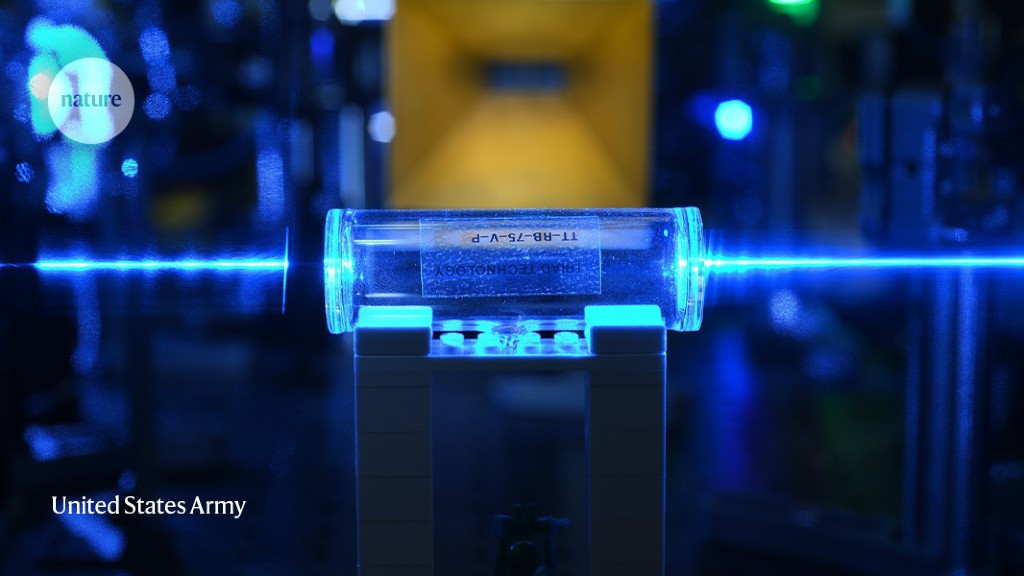
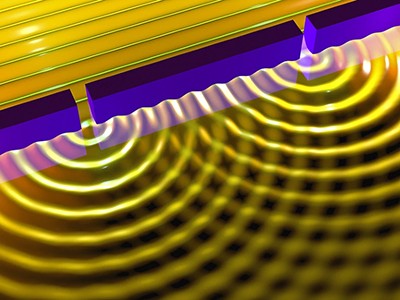
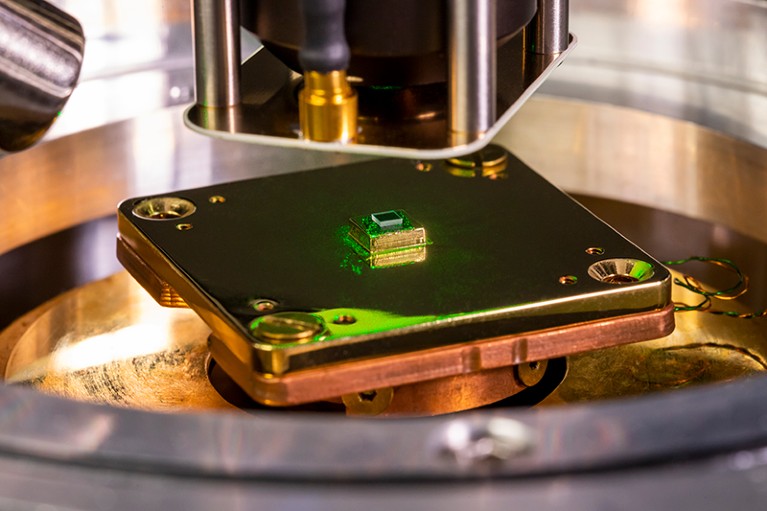
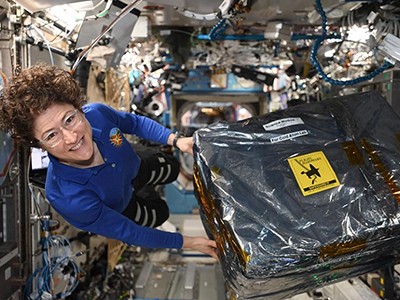
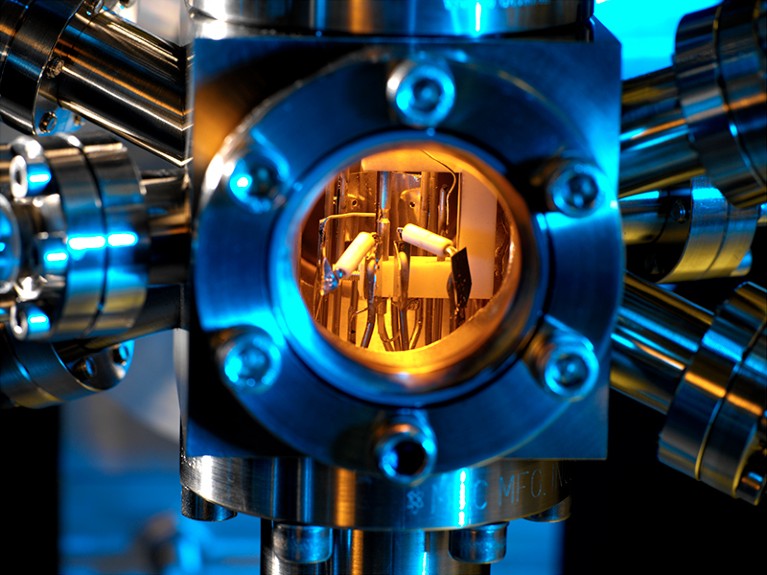
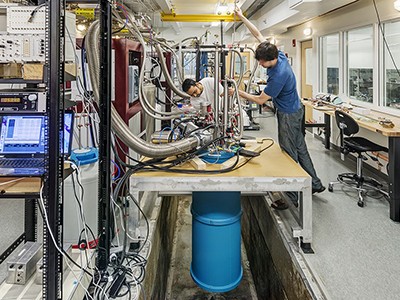
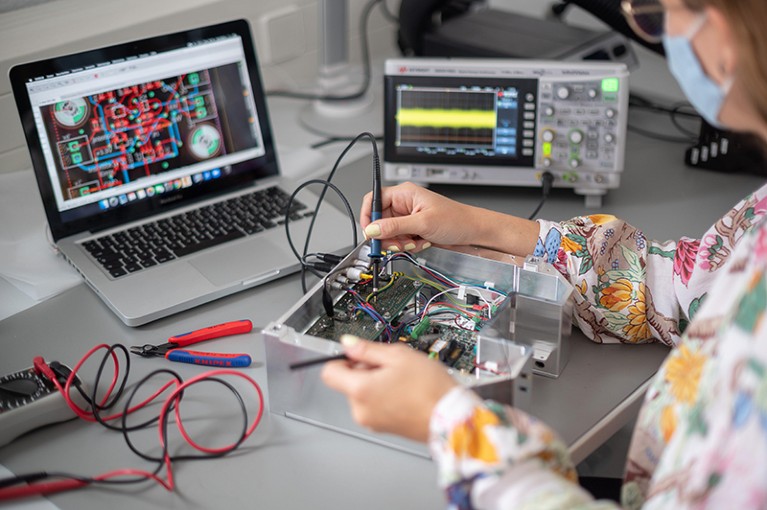
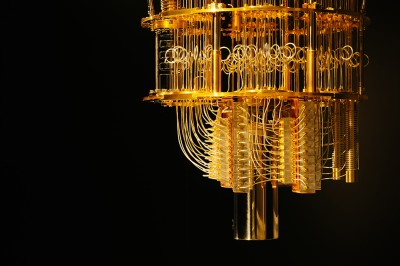
More News
Don’t leave out joints and bones in exercise studies
Heed lessons from past studies involving transgender people: first, do no harm
Monsoons are changing in India — here’s how to climate-proof the economy